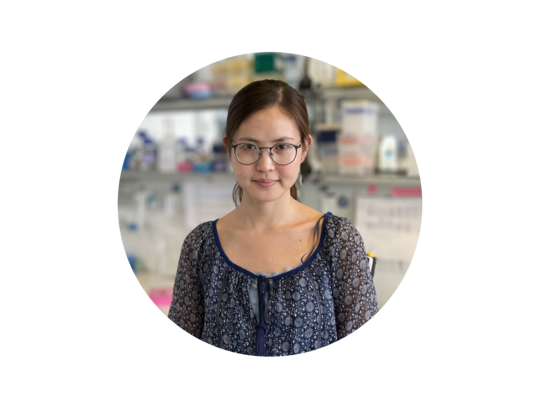CRC1588
Background:
Büchel Group (GA B02)
MYCN amplification is the driving mutation in a subset of high-risk neuroblastoma cases. Since the MYCN protein cannot currently be directly target using small molecules, various approaches are being tested to indirectly target its function. We previously showed that a critical function of MYCN is to resolve transcription-replication conflicts that are common during S phase in proliferating cells. Disrupting this MYCN function leads to a dramatic increase in transcription-replication conflicts and tumor cell-specific DNA damage that can be therapeutically exploited. Our preliminary work indicates that the MYCN-AURKA-CDK12 axis may be central to the proliferative function of MYCN in neuroblastoma cells. In this project we teamed up with the Henssen group (https://henssenlab.com) to investigate the therapeutic opportunities that arise from it. We hypothesize that like AURKA inhibitors, specific CDK12 inhibitors, which are in late-preclinical development, form synergistic drug combinations that trigger transcription-replication conflicts. This project is devided in four milestones:
1. We will molecularly characterize the MYCN-AURKA-CDK12 axis in vitro by testing CDK12 knockdown as well as inhibition.
2. We will translate our in vitro results in different mouse models. Genetic and non-genetic resistance mechanisms to the inhibitors tested here will be investigated.
3. We will investigate how ecDNA copy number heterogeneity in neuroblastomas modifies MYCN levels, and how this affects MYCN-driven transcription-replication conflict resolution and treatment responses that create such conflicts (Henssen group).
4. We will investigate how ecDNA copy number heterogeneity in neuroblastomas modifies MYCN levels, and how this affects MYCN-driven transcription-replication conflict resolution and treatment responses that create such conflicts (Henssen group).
Eilers Group (GA B01)
MYCN recruits the exosome complex, a 3'-5' RNA exonuclease, to MYCN chromatin binding sites during S phase, and recruitment terminates transcription by RNA polymerase II (RNAPII) when a replication fork approaches. This project builds on two of our recent observations. Firstly, we determined that MYCN nuclear protein complex formation is controlled by MYCN association with nascent mRNAs, which are exosome complex substrates, potentially facilitating recruitment of factors that expel RNA polymerase from chromatin when it encounters an obstacle (“stalls”). Secondly, we found that a critical mechanism by which MYCN facilitates DNA repair at promoters is to remove stalled RNAPII complexes from condensate-like compartments in which active transcription takes place. To this end, MYCN binds the TFIIIC protein complex. TFIIIC is both an architectural protein and a transcription termination factor. TFIIIC binding to MYCN is limited by direct competition with the aurora kinase A (AURKA) for MYCN binding. Homeostasis between these MYCN‑containing complexes could enable neuronal neuroblastoma progenitors to cope with transcription-associated stress. We hypothesize that these mechanisms facilitate neuroblastoma cell proliferation under suboptimal conditions (e.g. during metastasis) and the emergence of resistance in response to chemotherapy, accelerating neuroblastoma evolution. To test the dependence of MYCN-amplified neuroblastoma growth and evolutionary chemoresistance on the function of TFIIIC and the exosome complex we want to reach three milestones:
1. TFIIIC will be silenced by shRNA in a transgenic mouse model.
2. The structural exosome complex subunit, EXOSC5, will be depleted via an auxin‑inducible degron in an orthotopic mouse transplant model.
3. The TFIIIC/AURKA equilibrium will also be perturbed by PROTAC-mediated AURKA degradation as a first step towards clinical exploitation by potentially opening a new therapeutic window to treat patients with relapsed MYCN-amplified neuroblastoma.
4. We will also characterize changes in differentiation state and the tumor-immune microenvironment over the course of treatment, which may reveal new vulnerabilities or potential windows of increased susceptibility to immunotherapy.
For more information about the project and other groups of the CRC1588 click here.
Principles of the research:
1. Investigation and targeting of the MYCN-AURKA-CDK12 axis (GA 02)
2. Investigation of MYCN complexes
Lead: Prof. Dr. Gabriele Büchel

Mareike Müller (PhD Student)

Namuun Chinchuluun (PhD Student)

Lead: Dr. Dimitrios Papadopoulos

Theresa Schönrock (PhD)

Lead: Prof. Dr. Martin Eilers

Francisco Montesinos Expósito (PhD Student)

Project related literature:
Roeschert, I., Poon, E., Henssen, A.G., Dorado Garcia, H., Gatti, M., Giansanti, C., Jamin, Y., Ade, C.P., Gallant, P., Schülein-Völk, C., Beli, P., Richards, M., Rosenfeldt, M., Altmeyer, M., Anderson, J., Eggert, A., Dobbelstein, M., Bayliss, R., Chesler, L.*, Büchel, G.*, and Eilers, M.* (2021) Combined inhibition of Aurora-A and ATR kinases results in regression of MYCN-amplified neuroblastoma. Nat Cancer. https://doi.org/10.1038/s43018-020-00171-8
Herold, S.*, Kalb, J.*, Büchel, G.*, Ade, C. P., Baluapuri, A., Xu, J., Koster, J., Solvie, D., Carstensen, A., Klotz, C., Rodewald, S., Schülein-Volk, C., Dobbelstein, M., Wolf, E., Molenaar, J., Versteeg, R., Walz, S., Eilers, M. (2019) Recruitment of BRCA1 limits MYCN-driven accumulation of stalled RNA Polymerase. Nature. Mar;567(7749):545-549. doi: 10.1038/s41586-019-1030-9, * joint first author
Büchel, G., Carstensen, A., Mak, K.Y., Roeschert, I., Leen, E., Sumara, O., Hofstetter, J., Herold, S., Kalb, J., Baluapuri, A., Poon, E., Kwok, C., Chesler, L., Maric H. M., Rickman, D. S., Wolf, E., Bayliss, R., Walz, S., Eilers, M. (2017) Association with Aurora-A controls N-MYC-dependent promoter escape and pause release of RNA polymerase II during cell cycle. Cell Reports Dec 19;21(12):3483-3497. doi:10.1016/j.celrep.2017.11.090.
Vidal R., Leen E., Herold S., Müller M., Fleischhauer D., Schülein-Völk C., Papadopoulos D., Röschert I., Uhl L., Ade C.P., Gallant P., Bayliss R., Eilers M., Büchel G. (2023) Association with TFIIIC limits MYCN localization in hubs of active promoters and chromatin accumulation of non-phosphorylated RNA Polymerase II. bioRxiv 2023.11.18.567687; doi: https://doi.org/10.1101/2023.11.18.567687
Papadopoulus D., Ha S., Fleischhauer D., Uhl L., Schneider K., Mikicic I., Russell T.J., Brem A., Valanju O.R., Gallant P., Schuelein-Voelk C., Maric H.M., Beli P., Büchel G., Vos S.M., Eilers M. (2023) Direct RNA-binding by MYCN mediates feedback from RNA processing to transcription control. bioRxiv 2023.08.16.553474; doi: https://doi.org/10.1101/2023.08.16.553474
Papadopoulos D, Solvie D, Baluapuri A, Endres, T, Ha S., Herold S, Kalb J, Giansanti C, Schülein-Völk C, Ade CP, Schneider C, Gaballa A, Vos S, Fischer U, Dobbelstein M, Wolf E., Eilers M (2021) MYCN recruits the nuclear exosome complex to RNA polymerase II to prevent transcription‑replication conflicts. Mol Cell https://doi.org/10.1016/j.molcel.2021.11.002








